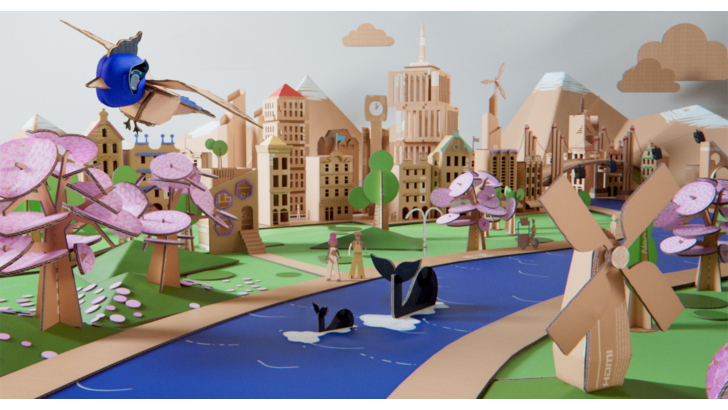[Editorial] How Samsung Works for a Better, More Sustainable Future for All Through Innovation
on June 4, 2021
June 5 is World Environment Day, a day designated by the United Nations in 1972 to encourage worldwide awareness and action towards protecting our environment. Each year, a different theme is chosen, and this year’s theme is ‘Ecosystem Restoration,’ a focus chosen to highlight the importance of environmental restoration as well as protection.
Science and technology have made our lives easier and more convenient thanks to the addition of various innovative products and services into our daily routines. But the downside of these additions has been the development of serious global environmental challenges including climate change and resource depletion – issues that threaten the future of our world.
In order to help mitigate these issues, Samsung Electronics strives to incorporate environmental sustainability into everything we do. Let’s take a look at how Samsung’s eco-conscious product innovation and consumer engagement come together to help us all achieve a sustainable future.

Senior Vice President Hyeongnam Kim, Head of Global CS Center, Samsung Electronics
Minimizing the Environmental Impact of a Product’s Entire Life Cycle
Based on the principle of product stewardship, our products are thoughtfully designed to minimize their impact on the environment. Samsung is deeply engaged in activities to minimize the environmental impact of its products throughout their entire life cycle – from development and manufacturing to distribution and usage through to after-sales service and recycling.
Firstly, Samsung incorporates environmental concerns into its product development process. To this end, the company has introduced an Eco-Design Process to evaluate its products against eco-conscious standards across different countries, including the U.S. and Korea. In 2008, the company established a company-wide eco-committee and division-level task forces to step up its efforts in developing eco-conscious products. To this day, Samsung is committed to developing innovative, high-performing products that have minimal impact on the environment.
Samsung’s emphasis on sustainability continues into the manufacturing stage. The company has been expanding its usage of renewable energy sources such as solar and geothermal heat in its facilities and is also incorporating the use of recycled water and waste. As a representative example, Samsung has also made strides in sustainability by sourcing 100% renewable electricity for all its facilities in the U.S., Europe and China last year. What’s more, Samsung plans to expand the usage of renewable energy to the rest of its facilities around the world following the development of local systems and infrastructure in each region.
Moving on to the distribution stage, Samsung has replaced its plastic and shrink wrap with packaging made of renewable biomaterials in order to reduce packaging waste. The company also now holds its paper suppliers to requiring a Forest Stewardship certification, and following these efforts, managed to completely replace all the paper used in the manuals and packaging for its mobile and consumer electronics products at the end of 2020.
Samsung helps users decrease their electricity consumption during the usage stage of a product’s lifecycle by providing them with energy-efficient products – thus contributing to the reduction of greenhouse gas emissions. Furthermore, the company is making continuous efforts towards developing durable products and a quick and easy repair process, since if consumers use their products for longer, they are then making a difference by reducing their environmental impact.
Going through to the final stage of a product’s lifecycle, disposal, Samsung is continuing to pioneer its waste collection and recycling programs around the globe, currently operating in 55 different countries. Users can in the U.S., for example, can drop off their end-of-life mobile devices at any of over 500 uBreakiFix locations, an independent repair chain. The company is also currently planning to expand its closed-loop recycling system in order to recover and reuse more iron, copper and plastics from e-waste.
Reducing 301 Million Tons of Greenhouse Gas Through Initiative and Innovation
Thanks to its product stewardship practices, Samsung has reduced the average energy consumption per unit of a product by 32%,1 equivalent to the cumulative reduction of 301 million tons of greenhouse gas emissions over the past 12 years since 2009. The company has also recycled over 4.54 million tons of e-waste through its global e-waste collection sites from 2009 to 2020.
To encourage customers to use their products for longer as part of a circular economy, Samsung has established a quick and easy repair process for users, through which the company supplies product repair information and parts to contracted repair shops as well as independent repair stores.
Upholding User Values Through Eco-Conscious Upcycling
Going beyond employing eco-conscious practices solely in the development of its products, Samsung has been making various efforts to reduce the use of resources across all of its supply lines in order to promote more sustainable consumption.
Last year, Samsung introduced its revolutionary Eco-Packaging for its TV products made from cardboard boxes in an effort to encourage upcycling and creativity in users, as they can form animal toys or small furniture pieces using their discarded packaging.

In addition, Samsung has also recently launched its Galaxy Upcycling at Home program, which enables users to harness their unused Galaxy smartphones as IoT devices, in Korea, the U.S. and U.K. The program also repurposes older smartphones into medical diagnosis cameras, helping to address vision impairment cases that are preventable with proper diagnosis.
We at Samsung are dedicated to creating a sustainable future that provides a better life for all by introducing creative eco-conscious products and solutions across all of our business areas. With a focus on sustainable management, we are putting carbon reduction, resource circulation and ecosystem restoration at the forefront of our efforts to protect the environment.
1 Figure from 2020 compared with 2008 level of energy consumption.





